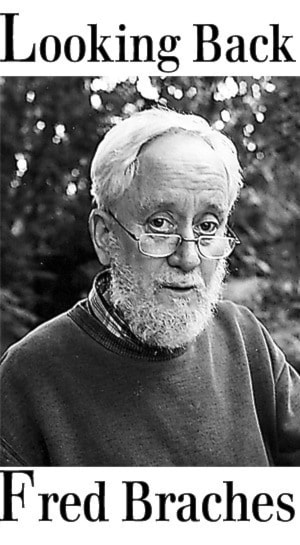Imagine Maple Ridge around 1900 without Lougheed Highway and without motorcars. People were living in isolated communities, walking for miles, carrying loads, some riding on horseback, others occasionally driving carts or wagons, all using the unpaved roads, muddy in winter, dusty in summer.
For most, the Fraser River was still the highway, and the train, available for the 15 years then, was growing in popularity to reach the new city of Vancouver.
Stretches of River Road connected only some of the communities on the Fraser River. Dewdney Trunk Road, when it came in 1906, connected the hinterland communities.
“Whonnock and Ruskin, although not more than three miles apart, are as effectively isolated as if on separate islands,” writes Mr. Beckett, Clerk Municipal Council to Mr. Devlin, Indian Agent.
The letter written by Mr. Beckett concerned a plan to move the Correction Line road (96th Avenue) down from the upper part of the Whonnock Indian Reserve. The present road crossed Whonnock Creek at an “extensive ravine” with steep grades on both sides of the creek that made it “a steep pull for a team of horses,” and “quite impracticable.” A proper bridge could be built at that spot, but the cost, estimated at $2,000, was considered prohibitive.
By building an alternative road with a crossing of the creek at a better spot, money could be saved. The municipality therefore endorsed a proposal by Charles Wetham of Ruskin to construct a new road through the Indian Reserve.
The deviation would start from 96th Avenue in the northwest corner of the reserve going down to the railroad, where the road would follow the tracks for a short distance and cross Whonnock Creek over a simple trestle bridge. Then the proposed road would climb up again to meet to the 96th Avenue in the northeast corner of the reserve.
It was assumed by the planners that such a road would be as beneficial to the people on the reserve as it would be to the white people. In reality, Chief Fidelle’s people would have less use for it than suggested, and the new road would encroach on the lives of the residents of the reserve as it would run straight through the centre of the village and pass their church and a few of their houses by within a few feet. Then there would be the required fencing.
The new road would also take away from what little land Chief Fidelle’s people had left that could be used for growing crops.
Taking for granted the consent of Chief Fidelle and his people and without making a formal request to the Indian Agent, arrangements were made to survey the road.
Civil Engineer Hill and an assistant arrived by train at Whonnock from New Westminster. Accompanied by Messrs. Whetham and Spilsbury, they entered the reserve and started work. Everything went all right until they reached the houses and the church and started driving stakes in the ground.
As an article in the Columbian put it: “This the Indians objected to. They [the surveyors] were ordered to desist, and finally the Indian women pulled up the stakes and assumed such a threatening attitude, that the surveyor and those who accompanied him, were forced to leave the reserve.”
After hearing Chief Fidelle’s people, the Indian Agent recommended and Indian Affairs agreed that this plan be dropped, its only object being some money savings for Maple Ridge at the detriment of the residents of the Reserve.
A few years later, the people of Ruskin and Whonnock did get the desired improvement of the road connecting the two villages, although not the new road promoted by council in 1901 and rejected by Chief Fidelle’s people. From the beginning, Councillor T.J. Hodgson had voiced his objection to Mr. Wetham’s plan. He had proposed only a slight deviation mainly away from the steep ravine, thus reducing the grades and allowing the construction of a smaller bridge. Council had first rejected Hodgson’s plan as impractical, but in the end Hodgson’s deviation found approval by all parties concerned.
In the 1930s, after the construction of the Lougheed Highway, 96th Avenue (Correction Line Road) lost its importance as a through road between Ruskin and Whonnock, and the part of the road on the reserve was closed off for public use. It is now overgrown, and the bridge is long gone.
Fred Braches is a local historian who lives in Whonnock.
